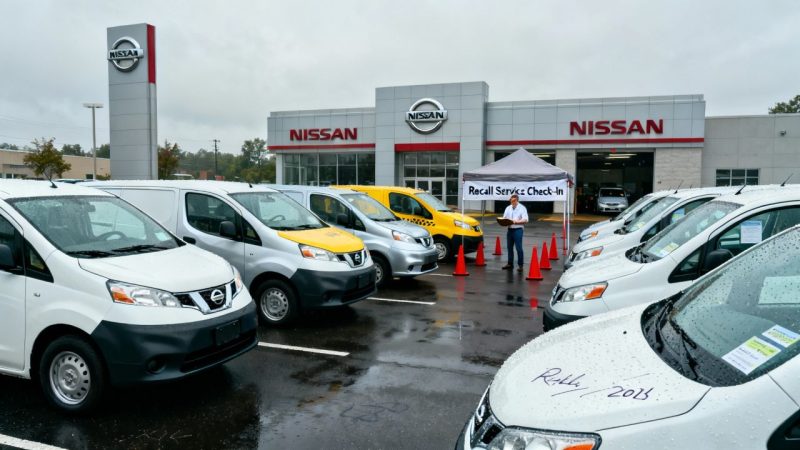A recall, a wiring harness, and a larger story about how we govern safety on the road.

Nissan is recalling 173,301 vans in the United States because a misrouted wiring harness can blow a fuel pump fuse and stall the engine — the kind of simple, preventable error that becomes a real safety risk at highway speed. The affected vehicles include the 2013–2021 Nissan NV200 Van, the 2014–2017 and 2019 NV200 Taxi, and the 2015–2018 Chevrolet City Express (built by Nissan for GM), according to the U.S. National Highway Traffic Safety Administration and multiple industry reports. The root cause is unglamorous but consequential: improper routing of the fuel tank temperature sensor harness can damage wiring, short the fuse, kill the pump, and stall the vehicle without warning, as first detailed in reports by Reuters, expanded by Auto123, and technical write‑ups such as Autoevolution. Owners will be notified and repairs will be free.
This is not an outlier. It’s a governance story hiding inside a service bulletin.
What’s Actually Going Wrong
- The defect is not the pump “failing” in the classic sense. It’s electrics. When the temperature sensor harness is routed poorly, it can chafe, short, and blow the fuel pump fuse. Once that fuse goes, the pump stops and the engine dies. No fuel, no propulsion.
- That makes this recall less about exotic component failure and more about process control — how a wire gets run, how it’s clipped and inspected, and how fast a manufacturer can find, scope, and fix the mistake across model years and badges.
The model list is telling. NV200 is a work van. The Taxi variant is a fleet staple in U.S. cities. Chevrolet City Express was Nissan’s van with a GM badge — which means this is a supply‑chain recall across brands. When a harness is wrong in one place, it’s wrong in every place the platform goes.
Why It Matters Beyond Nissan
- Public risk, private fix. Engine stalls are low‑probability, high‑impact events. On an arterial in Queens at rush hour, a sudden stall is not just a nuisance; it’s a safety externality for everyone behind you.
- Democratic accountability through institutions. The recall pipeline — detection, investigation, notification, remedy — is a core function of a modern regulatory state. NHTSA’s role is the reason you learn about this before a crash statistic tells the story. That’s not bureaucracy; that’s prevention.
We’re used to tech metaphors, but cars really are software‑defined now — and still utterly dependent on a thousand “dumb” physical choices. A misrouted wire is governance’s nightmare: invisible until it isn’t.
Nissan’s Recent Pattern — And The Industry’s
This campaign lands in a year when Nissan has already faced other large‑scale safety actions, a fact picked up in industry coverage that contextualizes this recall as the second major U.S. action in 2025. That doesn’t prove a systemic rot, but it does underline how fragile quality is when cost, speed, and platform sharing converge. If you want global democratic implications, they’re here: public trust in the rules that keep products safe and companies honest is foundational. When that frays — when recalls feel slow, opaque, or defensive — the legitimacy cost is bigger than one brand.
Fleet Operators Are The Front Line
If you run a small business with NV200s, downtime is payroll. A taxi fleet missing five vans for a week is a revenue cliff. The fix may be “free,” but the operational cost is not. Regulators and manufacturers know this and typically prioritize parts flow and scheduling — but it’s worth saying clearly: speed matters. A recall completed in weeks is consumer protection; a recall that drags into months is a hidden tax on workers.
How To Protect Yourself Now
- Check your VIN. Use the federal lookup at NHTSA Recalls. It’s the canonical source and will show whether your exact vehicle is covered and whether the remedy is ready.
- If you own an affected model and experience hard starts, hesitation, or stalling, park it and call the dealer. Document dates, symptoms, and any towing receipts.
- If you’re a fleet manager, get a prioritized service plan in writing. Ask about mobile repairs or extended hours. Track units in and out to minimize downtime clustering.
Owners will be notified by mail and the repair is free once dealers have parts — that’s the statutory baseline that coverage like Reuters and Auto123 emphasize. If you don’t want to wait on the letter, call your dealer with your VIN today.
The Systemic Fix We Should Demand
- Better early‑warning loops. If a harness routing error shows up in warranty data or fleet service notes, the clock should start. NHTSA’s authority is only as strong as the data it gets. Congress should keep funding ODI (the Office of Defects Investigation) so it can spot patterns faster.
- Supplier transparency. Platform‑shared parts across brands require recall coordination across brands. GM owners with a City Express shouldn’t be learning about a Nissan recall second‑hand.
- Recall UX. Notifications should be multilingual, digital‑first, and opt‑in for SMS. If you can bank on your phone, you should be able to book a recall slot on it.
The progressive case here is simple: markets need rules, and rules need teeth. When they work, the result looks like this recall — public, specific, and fixable. When they don’t, it looks like scandal.
Bottom Line
A wire in the wrong place can put a van in the wrong lane at the wrong time. That’s why this recall matters. Credit to the process: identify, disclose, fix. Now Nissan has to execute quickly and transparently — and regulators should keep the pressure on until the last VIN is closed. Safety isn’t a slogan; it’s logistics.
If you think your vehicle might be affected, start with the federal VIN tool at NHTSA Recalls. For technical background on the defect and model coverage, see reporting from Reuters, Autoevolution, and Auto123.
